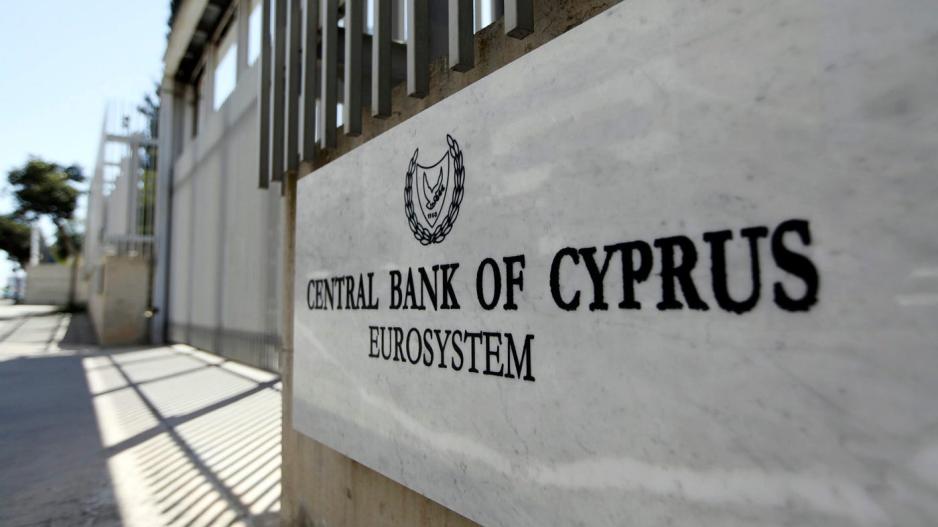GDP Growth at 2.4% and Inflation at 3.9% in 2023, Central Bank of Cyprus Projects
Ηigh Debt of the Private Sector Remains a Challenge
The Central Bank of Cyprus estimates that the GDP growth rate will reach 2.4% in 2023, with inflation projected at 3.9%, as expressed in its 2022 Financial Stability Report released today. The report also highlights the potential for a new wave of Non-Performing Loans due to rising lending rates.
The Bank notes the significant resilience demonstrated by the Cypriot economy and banking sector throughout 2022, continuing into the present. The Cypriot economy recorded a notable expansion of 5.6% in 2022, compared to a 3.5% increase in the eurozone. This growth was driven by better-than-expected tourism performance, economic impacts from the influx of foreign companies as part of Cyprus' strategy for attracting and expanding company activities (international headquartering), and the country's minimal reliance on natural gas compared to other European nations.
Additionally, domestic inflation reached historic highs in 2022, with the Harmonized Index of Consumer Prices (HICP) averaging 8.1%. The substantial rise in inflation is primarily attributed to the unprecedented adverse effects of the Russian invasion of Ukraine, particularly on energy and food prices, leading to ripple effects across several sectors of the domestic economy.
Despite ongoing global challenges and the prolonged war in Ukraine, the Central Bank of Cyprus anticipates the Cypriot economy to continue its positive trajectory in 2023. According to the Bank's latest forecasts from September 2023, the GDP growth rate is expected to be 2.4% in 2023, 2.7% in 2024, and 3.1% in 2025.
These projections also foresee a significant reduction in inflation to 3.9% in 2023, with further easing of inflationary pressures projected for 2024 and 2025, at 2.7% and 2% respectively.
However, the Bank notes that these forecasts were made prior to the outbreak of war in the Middle East, introducing uncertainty regarding potential impacts on the Cypriot economy, which will depend on the duration, intensity, and extent of the conflict.
"Although the Cypriot financial sector remains resilient, the impacts on Cyprus's economy, in a scenario of prolonged warfare and involvement of additional countries, could indirectly pose further challenges to financial institutions," the report states.
For Cyprus, the main downward risks to GDP are associated with the possibility of greater-than-expected negative impacts on service exports, due to the relative impact of geopolitical tensions on the external environment. These risks are also linked to potentially higher prices for essential goods and products.

For 2022, the Central Bank's report indicates that following the pandemic's retreat, the Cypriot economy faced new external shocks. Specifically, households and businesses with variable-rate loans linked to Euribor or the ECB's interest rate face new challenges in servicing their debt.
It is noted, however, that a significant portion of loans reference the basic interest rate of financial institutions, which, for now, has not experienced significant increases, as it is tied to the financing cost of financial institutions, including the deposit interest rate, which has not significantly risen.
"As a result, households and businesses with loans in the aforementioned category are not expected to be greatly affected at present," the report says.
Additionally, it adds that the full impact of prolonged high inflation and the subsequent significant increase in interest rates on the balance sheets of the private non-financial sector is expected to become more noticeable over time.
The high debt of the private, non-financial sector, despite its recent downward trend, combined with rising lending rates and living costs due to prolonged high inflation, creates additional challenges regarding the sector's, especially vulnerable households and businesses, ability to meet their obligations.
Considering the expected contraction in households' disposable income, the potential reduction in profitability of non-financial businesses, and the increase in lending rates, "the risk of a new wave of insolvent households and businesses cannot be overlooked," the Central Bank warns.
However, so far, there are no indications that this risk has materialized. While vulnerabilities in the household and business sector appear to have increased, economic growth, fiscal measures taken to mitigate the effects of prolonged inflation, and the private non-financial sector's precautionary savings support the resilience of the financial sector.
The potential deterioration in the quality of financial institutions' assets, despite positive prospects for profitability and solvency, also poses a challenge to the financial sector, especially the banking sector, as approximately 80% of assets pertain to this sector.
A potential increase in Non-Performing Loans would directly impact the profitability of financial institutions due to increased provisioning and could affect their capital adequacy and asset quality, and to a lesser extent, their ability to offer new lending to the economy, the report states.
Nonetheless, it notes that positive forecasts for GDP growth, the low unemployment rate, and the anticipated rise in wages, according to the Central Bank's latest forecasts, may help limit these risks.
Regarding the foreclosures framework, the Central Bank states that having a stable legal framework for foreclosures remains vital for managing both the legacy volume of Non-Performing Loans and potential new ones. Specifically, the foreclosures framework should be implemented smoothly so that it functions as an effective tool for addressing strategic defaulters and also serves as leverage, encouraging creditors and borrowers towards sustainable restructurings, it notes.






